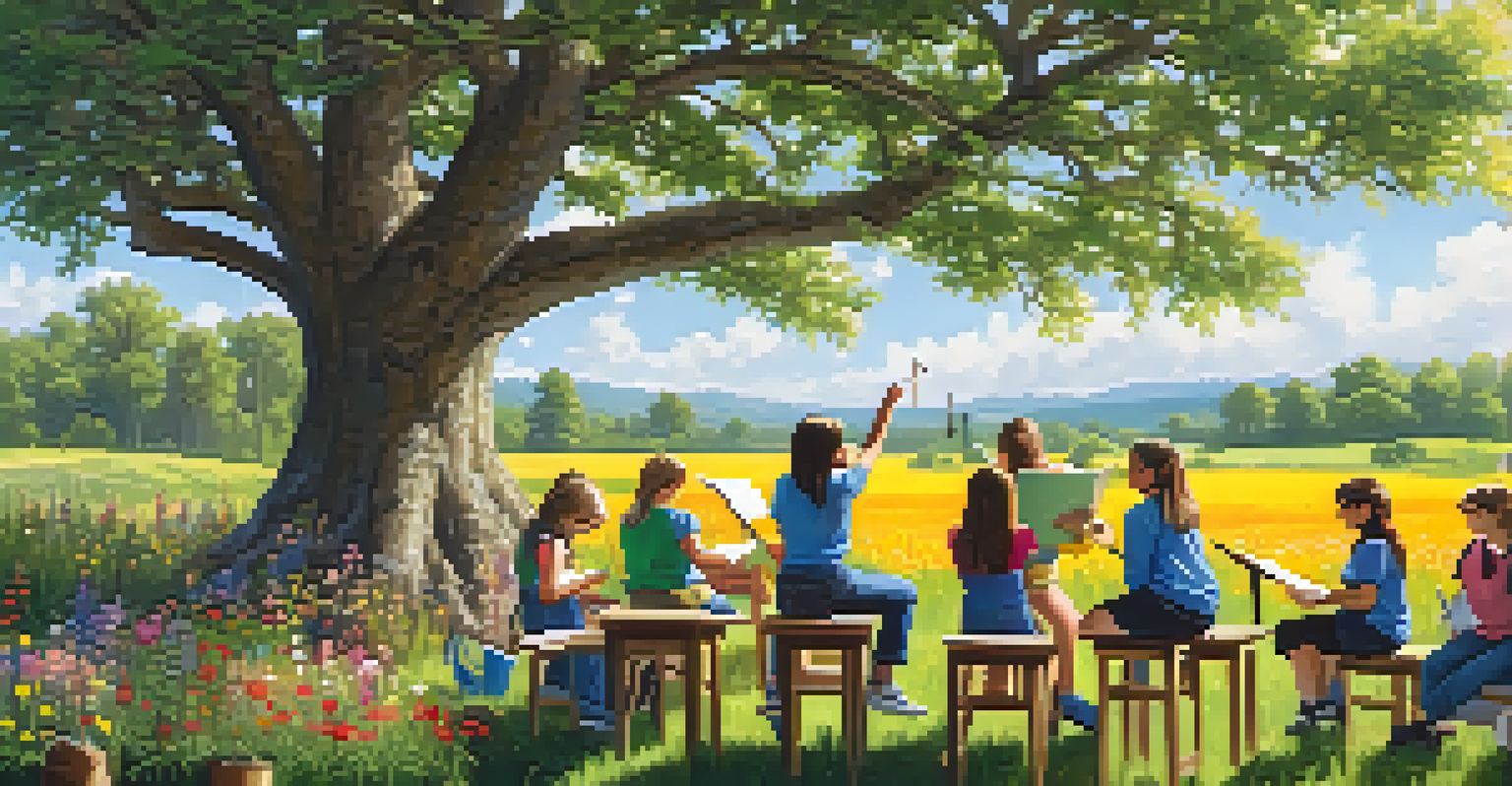Using Nature as a Classroom for Holistic Learning

Understanding Holistic Learning in Nature
Holistic learning emphasizes the interconnectedness of knowledge, emotions, and experiences. When we use nature as a classroom, we create a dynamic environment that engages students on multiple levels. This approach not only nurtures academic skills but also fosters emotional intelligence and a sense of community.
Nature is not a place to visit. It is home.
Imagine a child exploring a forest, observing the intricate relationships between plants and animals. This hands-on experience provides insights that textbooks simply cannot offer. It encourages curiosity and critical thinking, allowing students to connect concepts across subjects like science, art, and even ethics.
By immersing learners in natural settings, we promote a deeper understanding of their surroundings. They begin to see the relevance of what they learn and how it applies to real-world situations. Nature becomes a powerful teacher, guiding students toward more meaningful discoveries.
Benefits of Outdoor Learning Environments
Learning outdoors can significantly enhance cognitive function and retention. Studies have shown that students who engage in outdoor activities demonstrate improved focus and creativity. The fresh air and natural light can invigorate the mind, making learning more enjoyable and effective.

Consider an outdoor science lesson where students measure the height of trees and analyze soil samples. This experiential learning not only solidifies their understanding of scientific principles but also encourages teamwork and communication skills. They learn from each other and from their environment, fostering collaboration.
Moreover, outdoor learning environments can help reduce stress and anxiety. Nature has a calming effect, promoting mental well-being. By providing students with a peaceful setting, we create an atmosphere conducive to exploration and discovery.
Integrating Nature into Curriculum Design
Integrating nature into the curriculum requires creativity and flexibility. Educators can design lessons that incorporate outdoor experiences, such as nature walks, gardening, or wildlife observation. This not only makes learning more engaging but also helps students develop a sense of stewardship for the environment.
The best classroom and the richest cupboard are roofed only by the sky.
For example, a history lesson could take students to a local historical site, allowing them to connect with their community's past while appreciating the natural landscape. Such experiences can spark interest in subjects that may seem distant or irrelevant in a traditional classroom.
Additionally, teachers can collaborate with environmental organizations to create interdisciplinary projects. These partnerships can provide resources and expertise, further enriching the learning experience and exposing students to real-world applications of their studies.
Fostering Emotional and Social Learning Outdoors
Nature isn't just a backdrop for academic learning; it's a catalyst for emotional and social growth. Engaging with peers in outdoor settings encourages communication, empathy, and teamwork. Students learn to navigate challenges together, strengthening their relationships and building a sense of community.
Imagine a group of students working together to build a small garden. They must communicate their ideas, negotiate roles, and support one another through the process. This collaborative experience teaches valuable life skills while also instilling a sense of achievement and responsibility.
Furthermore, nature provides opportunities for self-reflection and personal growth. Students can take quiet moments in a natural setting to ponder their thoughts and feelings, cultivating mindfulness. This connection to their inner selves enhances emotional intelligence and resilience.
Encouraging Environmental Stewardship Through Learning
When students learn in nature, they develop a deeper appreciation for the environment. This connection often leads to a commitment to environmental stewardship. By understanding ecosystems and their fragility, students are inspired to take action to protect our planet.
For instance, participating in a local cleanup initiative not only teaches students about waste management but also instills a sense of pride in their community. They become active contributors to the health of their environment, reinforcing the idea that their actions matter.
Moreover, this sense of responsibility can extend beyond the classroom. Students who engage with nature are more likely to advocate for sustainable practices in their daily lives, influencing their families and communities to prioritize environmental health.
Challenges of Outdoor Learning and Solutions
While outdoor learning offers numerous benefits, it also presents challenges. Weather conditions, safety concerns, and resource limitations can deter educators from fully embracing this approach. However, with thoughtful planning and creativity, these obstacles can be overcome.
For example, teachers can prepare for inclement weather by having alternative indoor activities that still incorporate nature themes. Additionally, establishing clear safety protocols ensures that students can explore their environment without unnecessary risks.
It’s also essential to advocate for resources and training for educators. Schools can invest in professional development that focuses on outdoor education strategies, equipping teachers with the skills they need to facilitate meaningful learning experiences in nature.
Future Perspectives on Nature-Based Learning
As we look to the future, the potential for nature-based learning continues to grow. With the increasing awareness of mental health and environmental issues, more educators are recognizing the value of outdoor experiences. This shift could lead to a more holistic approach to education that prioritizes well-being alongside academic achievement.
Picture a future classroom where students regularly engage with their natural surroundings, fostering a lifelong love for learning and the environment. Such an educational paradigm could produce not only knowledgeable individuals but also compassionate and responsible global citizens.

Ultimately, embracing nature as a classroom can transform how we educate future generations. By prioritizing holistic learning, we can cultivate a deeper connection to both ourselves and the world around us.